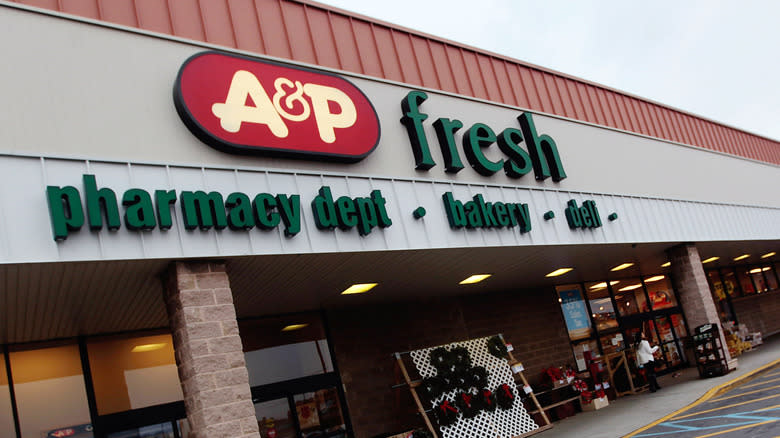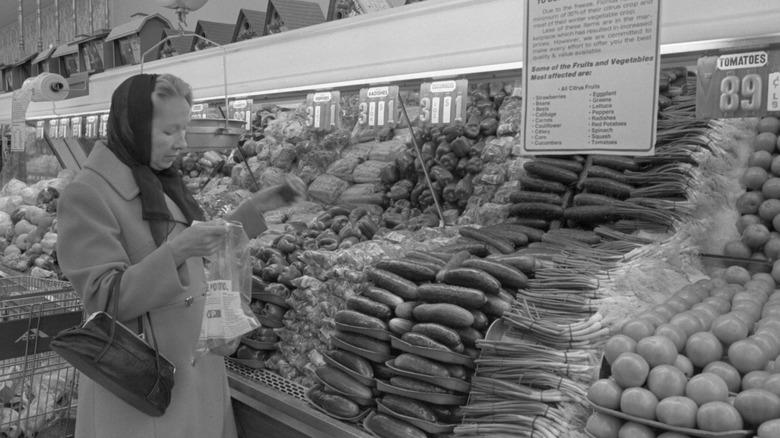Whatever Happened To A&P Grocery Stores?

If you grew up in the northeastern United States between the Great Depression and the 1990s, A&P grocery stores were likely an iconic presence in your community — yet to anyone who grew up in the last 20 years, the now-defunct brand is basically unknown. So how did such a big name disappear within decades?
Originally founded in New York City back in 1859, A&P was a shorthand for The Great Atlantic & Pacific Tea Company. It became one of the country's first chain retailers, expanding westward and pioneering concepts like store-brand items with its once-famous Eight O'Clock coffee. Despite being an eclectic shop that was not yet a full supermarket, A&P also became one of the first retailers to focus on discount pricing, and it eventually opened its first full grocery store in 1912. But the low prices and innovative thinking that fueled its ascension to one of the biggest companies in the country also eventually led to its demise.
Taking off in the 1920s, A&P continuously experimented with scientific management strategies that lowered costs, like streamlining inventory and vertical integration through the purchasing of fish canneries and milk producers. By the late 1930s, the company was the largest retailer in the country with 16,000 locations nationwide — and was the second largest business period, behind only General Motors. Yet that would be its apex. After the death of owners George and John Hartford in the 1950s, who had been behind A&P's risk-taking and experimenting, the stores experienced a protracted decline.
Read more: Restaurant Foods That Always Taste Better Than What You Make At Home
A&P Grocery Stores Refused To Change For An Evolving Market

A&P had grown by driving smaller stores out of business with low prices, but it couldn't keep up with the competition. The company was slow to expand from cities into the new suburbs in the post-war period, and larger grocery stores that offered more convenience — with a better selection of non-food items like cleaning supplies — picked away at its market share. Through the latter half of the decade, A&P was criticized for its refusal to innovate. It stayed focused on basics like eggs and milk as other stores started offering more specialty products that appealed to evolving tastes. Stores also retained a dated appearance and branding, even as higher-end stores like Whole Foods offered a brighter, more inviting environment. By the time A&P filed for its first bankruptcy in 2010, it had only 395 stores, mostly back in the Northeast.
Just like with its product selection, A&P also couldn't keep up with pricing. New discount competitors like Walmart and Target entered the grocery market, often studying and using the exact tactics A&P had used in the 1920s and '30s. Without the appeal of a discount retailer — or the higher-end products of a specialty one — A&P had nothing left to offer shoppers. After a second bankruptcy in 2015, it sold or shuttered all of its remaining stores. The company that kicked off the forces of the modern supermarket wars over 100 years earlier had finally succumbed to them.
Read the original article on Tasting Table.

